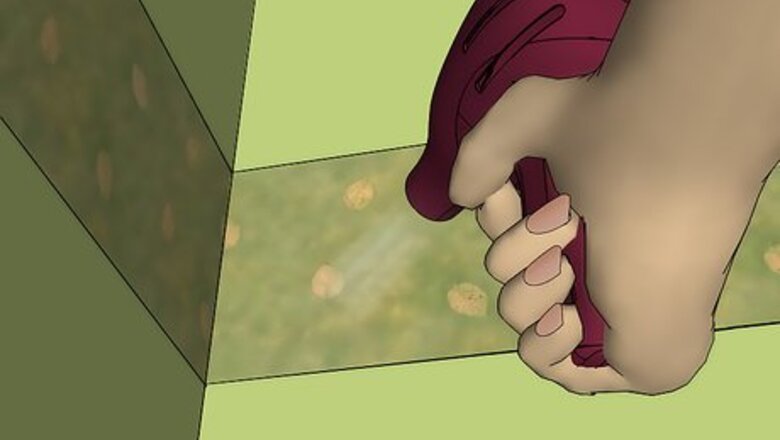
views
Hair Dryer Method
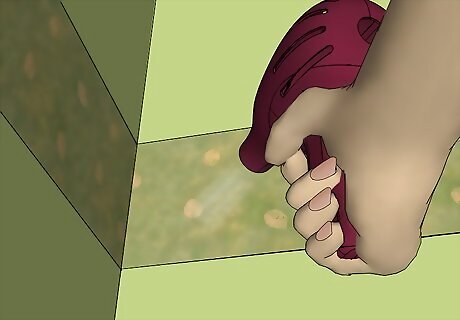
Heat the wallpaper. Set the hair dryer to its highest setting. Plug it in and blow hot air over the corner and edge of the wallpaper. Heat the wallpaper for about 30 seconds. The heat from the hair dryer should loosen the adhesive that was used to attach it to the wall.
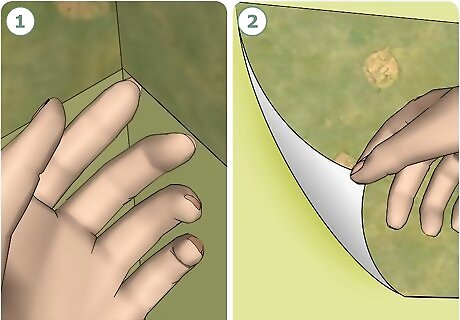
Loosen the edge of the wallpaper. Use your fingernail or a knife to lift the edge of the wallpaper and peel it back slowly. If it comes loose, keep peeling it back until it resists.
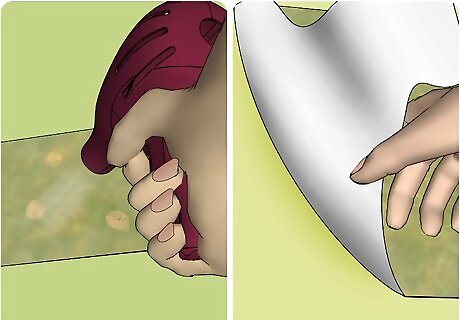
Continue heating and peeling the wallpaper. Hold the hair dryer over the unpeeled section of wallpaper border and slowly peel it away. Continue down the length of the border, heating and peeling it until the entire piece of wallpaper has come loose from the wall. Don't rip the wallpaper off in strips. This ends up making it more difficult to remove in the long run, since it leaves thin pieces of wallpaper on the wall. If the wallpaper stubbornly sticks to the wall, don't force it. The hair dryer method doesn't work with all types of adhesive; you may have to try another strategy.
Spray Bottle and Scraper Method
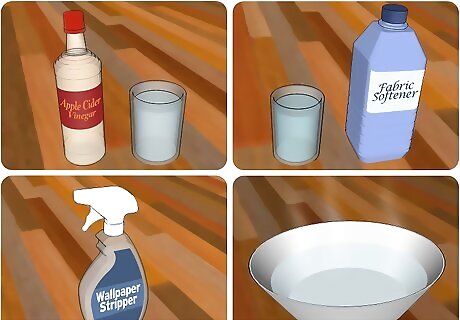
Fill a spray bottle with a wallpaper stripper solution. There are a variety of different substances you can use to spray on the wallpaper to loosen the adhesive. Choose from these options: Apple cider vinegar and water. This natural solution works well to break down the adhesive, but it can leave a smell on the wall; only use it if your wallpaper is covering paint, not a bottom layer of wallpaper. Liquid fabric softener and water. This solution is cheap and effective, but you may not want to use chemicals on your wall. Manufactured wallpaper stripper. You can buy wallpaper stripper solution from the hardware store to use on your walls. Warm water. When all else fails, plain water usually does the trick.
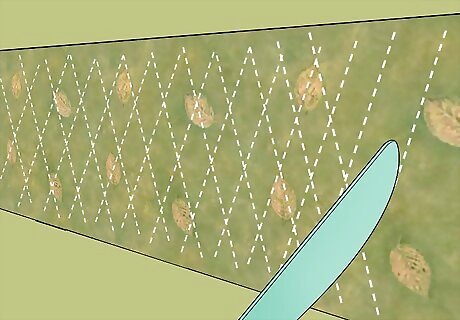
Use a perforating tool to score the border. This is especially important if the border is made of vinyl. If you don't score it, the liquid solution won't be able to seep in. Scrape the scoring tool over the border for several minutes, until it's covered with hundreds of tiny holes. Make sure the perforating tool you use is made of plastic, not metal. A metal scraping tool could harm the wall underneath. If you don't have a perforating tool, use a plastic knife to make criss-crossing scores across the border.
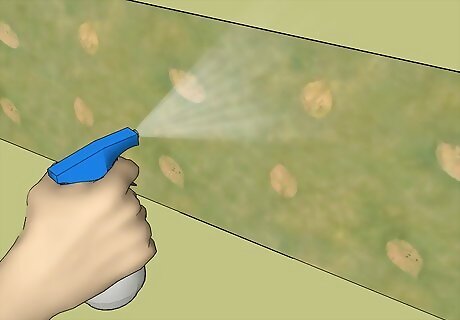
Saturate the wallpaper border with the solution. Spray it all over, in the corners, near the edges, and in the middle. Don't skimp with the solution; the wallpaper needs to be completely wet for the adhesive to begin to loosen. Let the solution sit for 15 minutes before continuing.
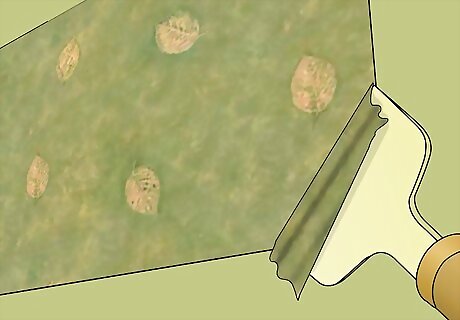
Start scraping. Use a plastic scraping tool (similar to an ice scraper) to life the edge of the wallpaper and begin scraping it away. Use one hand to scrape and the other one to peel. Keep scraping and peeling across the length of the border. If you run into a stubborn area, douse it with solution. Let it sit for five minutes before continuing. Don't rip the wallpaper off in strips; this makes it a lot more difficult to remove the tiny pieces.
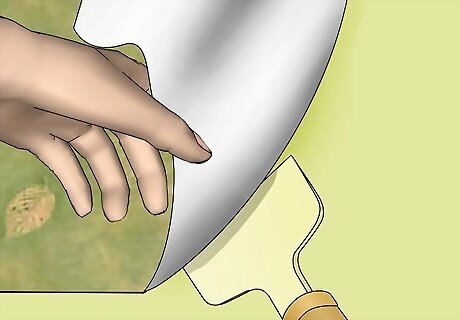
Lift away the wallpaper and scrape the pieces underneath. You may have to saturate the stray pieces with more solution. Use the scraper to loosen them, then peel them away.
Steamer Method
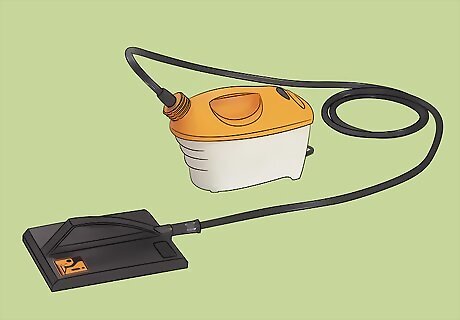
Rent or buy a wallpaper steamer. Wallpaper steamers aren't expensive, so if you plan on removing a lot of wallpaper in the future, you might want to go ahead and spring for one. If you only plan to use it once, consider renting one instead. In a pinch, a clothing steamer can be used. Steaming can damage some wall surfaces and should not be done on wallpapered walls unless you intend to remove the wallpaper as well. If you are going to try steaming the border off, test it in an inconspicuous area first.
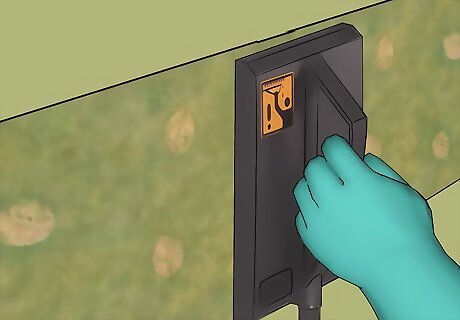
Steam from the bottom to the top. Run the steamer along the border to loosen it, working from the bottom edge to the top edge. Use your free hand to lift the border as it steams and loosens.
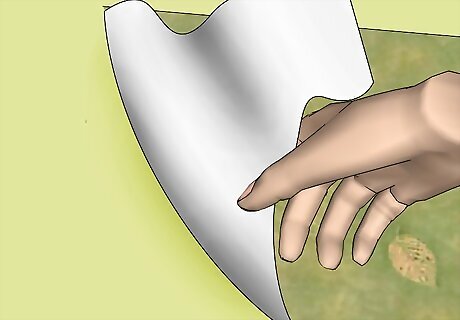
Remove the border. Continue steaming the border and lifting it away, using the scraper to help loosen it, until you're able to remove the entire border. It should come free easily after the steam treatment.
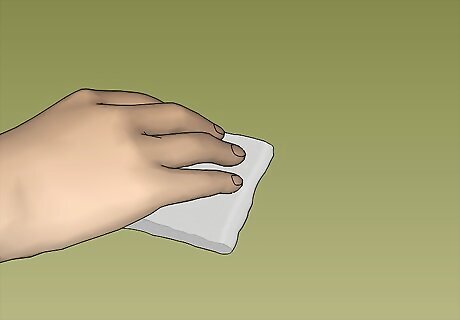
Clean the adhesive from the wall. Make sure all traces of wallpaper and glue are gone, since bits of adhesive can ruin your new paint or wallpaper job. You have to create a flat substrate so that the wallpaper can adhere better to the wall. If you want to hang up mural wallpaper, you will need a laser level, tape, polymer tools, and a box knife.

















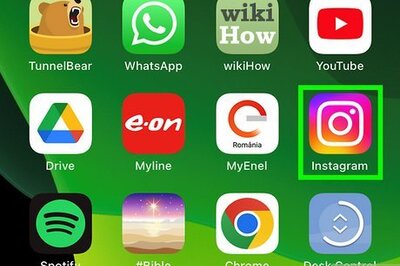

Comments
0 comment